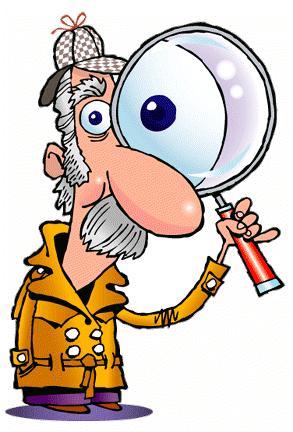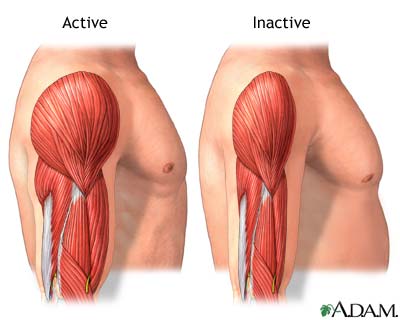We have all met them.
Those unique Karate teachers that make everything feel like instant enlightenment.
Those sensei who have a seemingly magical ability to repeatedly find critical points of improvement in an art that we’ve been practising for years. Those sensei who always make you feel safe and happy in the dojo, yet somehow manage to push your limits above and beyond what you thought was even possible (often without you even noticing!).
Those sensei who, not unlike a burning candle, consume themselves to light the way for others.
(If you haven’t met a sensei like this, don’t worry. You were probably just too busy to notice.)
But how do they do it?
How do these inspiring individuals find ways to constantly improve and encourage their students to become the best they can be? There has to be a secret recipe!
Well, I’ve had this theory on my mind for some time now…
And I think I’ve found the answer:
I call it the “Shin-Gi-Tai of Teaching”.
That’s right.
- Shin.
- Gi.
- Tai.
Also known in English as the mind (shin/kokoro), technique (gi/waza) and body (tai/karada), the three famous theoretical pillars of a “perfect” Karate practitioner.
And, in this case, of a “perfect” Karate teacher.
See, it has often been said that if you are to achieve ultimate balance in your Karate practise, you need to keep your body, mind and technique in perfect synchronization. Having too much of one thing, or too little of another, will disturb the equilibrium and make you a one-sided practitioner.
We need to be harmonious.
And that goes not only for how we choose to practise Karate with ourselves, but for how we express it to other people too.
So let me briefly break down what I believe are the three main styles of teaching, why they suck, and how to finally become the ultimate teacher by combining them all.
#1. Shin – The Preacher
If you are too heavily leaning into the shin (mind/spirit) aspect of Karate’s shin-gi-tai trinity, you are what I would call a Preacher.
That is; somebody who likes to “talk the talk”, but doesn’t really “walk the walk”.
(Or, he/she might have “walked the walk” a long time ago – say, twenty years and 110 pounds ago!)
A Preacher loves talking to his/her students about “how one should practise this”, “why one should practise that”, “who’s good”, “who’s bad”, and so on. A Preacher loves pouring out his/her “knowledge” onto anybody that cares enough to listen, and surprisingly often he/she comes through as a very intelligent and caring person.
However, the actual preaching often consists of little more than esoteric mumbo-jumbo, pseudo-taoistic Steven Seagal crap and loads of unconfirmed rumors about secret old-school Okinawan family-Karate experts.
And you will probably swallow it all…
That’s what happens when people get too caught up in the concept of shin – our mysterious mind.
Be aware of a Preacher disguised as a sensei.
#2. Gi – The Technician
Next we have the Technician
 A Technician is somebody obsessed with the concept of technique (gi) and its constant practise. Pounding away at teaching new skills and techniques, night after night, caught up in teaching the finer details of the most uninteresting techniques you can ever imagine (with a relatively small amount of time dedicated to theory or principles for better understanding the practical usage of the actual techniques), a Technician would rather slide down a barbed wire banister into a bucket of alcohol rather than see somebody make the slightest technical error in their dojo.
A Technician is somebody obsessed with the concept of technique (gi) and its constant practise. Pounding away at teaching new skills and techniques, night after night, caught up in teaching the finer details of the most uninteresting techniques you can ever imagine (with a relatively small amount of time dedicated to theory or principles for better understanding the practical usage of the actual techniques), a Technician would rather slide down a barbed wire banister into a bucket of alcohol rather than see somebody make the slightest technical error in their dojo.
Way too often, as in the case of the Preacher, a Technician will come off as quite smart and savvy since he/she can easily detect the slightest “mistake” from across a crowded dojo.
The ugly truth though, is that behind this technical façade hides a substantial lack of comprehension in any other aspects of Karate.
Although the Technician can impress with a meticulous care for tiny details, his/her students will rarely, if ever, have any power behind their punches, snap behind their strikes, weight behind their kicks or spirit behind their kiai.
They will just be drones – stuck in a beehive of meaningless details.
Be aware of a Technician disguised as a sensei.
#3: Tai – The Coach
Lastly, we have the Coach.
A Coach is, as the name implies, somebody who’s main interest is the physical (tai, body) development of his/her students and associated training culture.
Needless to say, peeking into the dojo of a Coach is quite the adventure; if will be filled to the brim with people doing all kinds of hardening exercises, sit-ups, push-ups, jumping jacks, stretching, weight training, grunting and being generally masculine (in a primitive kind of way, not the metrosexual way).
For some reason, a lot of Goju-ryu, Kyokushinkai and Uechi-ryu dojo spring to mind, but I digress…
A Coach sincerely believes that purely by developing the body – through strengthening it, stretching it, hardening it, occasionally hurting it – is the ultimate way to achieve enlightenment when it comes to Karate. That, and yelling like crazy.
And, just like when it comes to the Preacher and the Technician, the Coach almost always comes of as a bona fide expert in his field (indeed, his subscription to Muscle & Fitness Magazine is probably older than you are) as he tosses around the latest training terms like a friggin fruit salad.
But, as we know by now, it’s all just smoke and mirrors.
The truth is, under the surface of physical training, there is not a whole lot of understanding going on when it comes to the deeper aspects of Karate.
But that is, I guess what make a Coach a Coach.
Be aware of a Coach disguised as a sensei.
______________________________
So, what’s the conclusion then?
How can we, by having briefly examined the three aspects of shin-gi-tai (mind-technique-body) from a teaching perspective understand the actual role of a true sensei better?
Well, it’s pretty obvious, isn’t it?
The answer is the same no matter what your role is – teacher or student.
You need to have them all.
And, perhaps more importantly, they need to be well-balanced.
To me, that’s a real sensei.
A Preacher, Technician and Coach – all in one.
Which, in the end – as everyone who’s met that special sensei can testify – truly proves there really is such a thing as “a whole greater than the sum of its parts”.
The parts you already know.
The whole?
That’s a sensei.



16 Comments